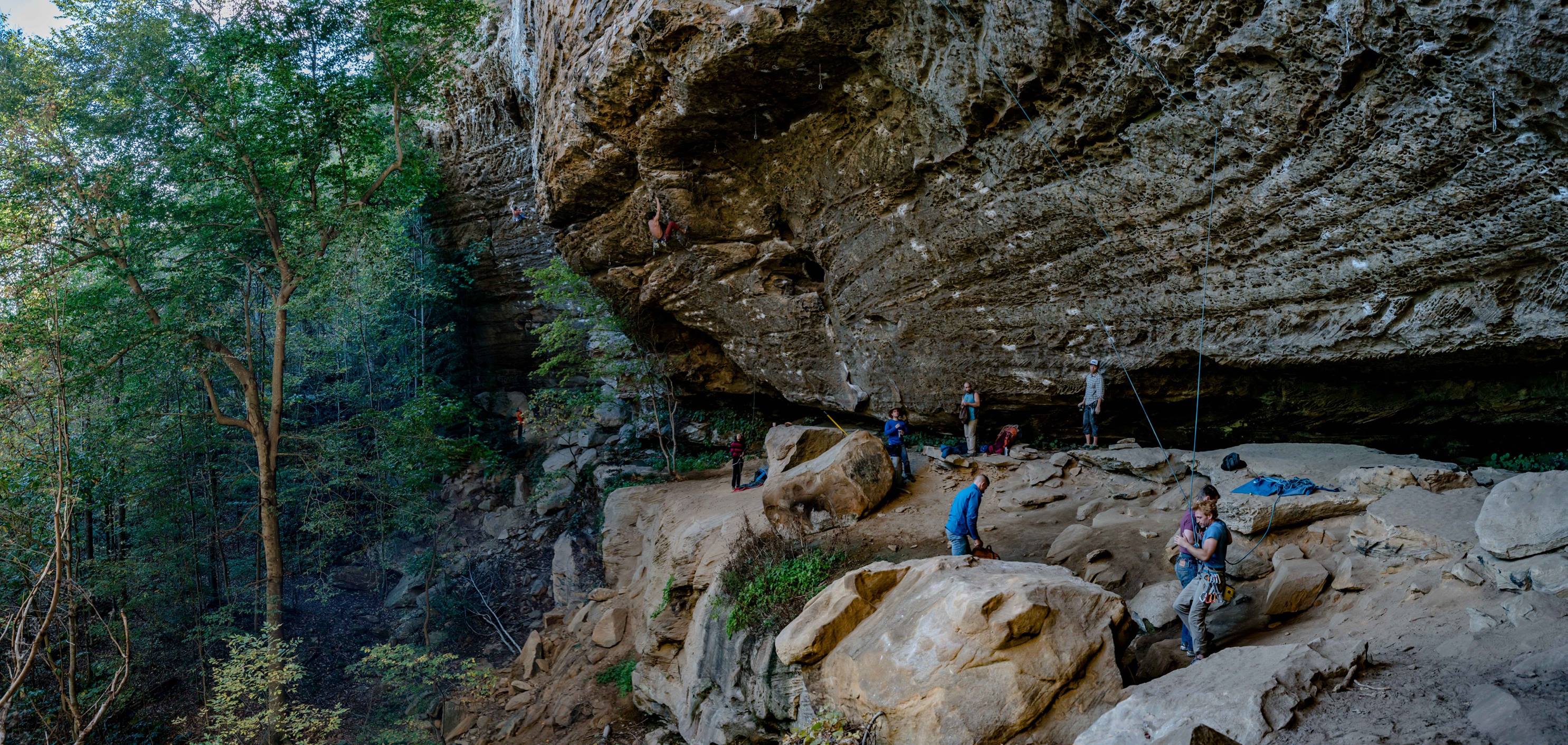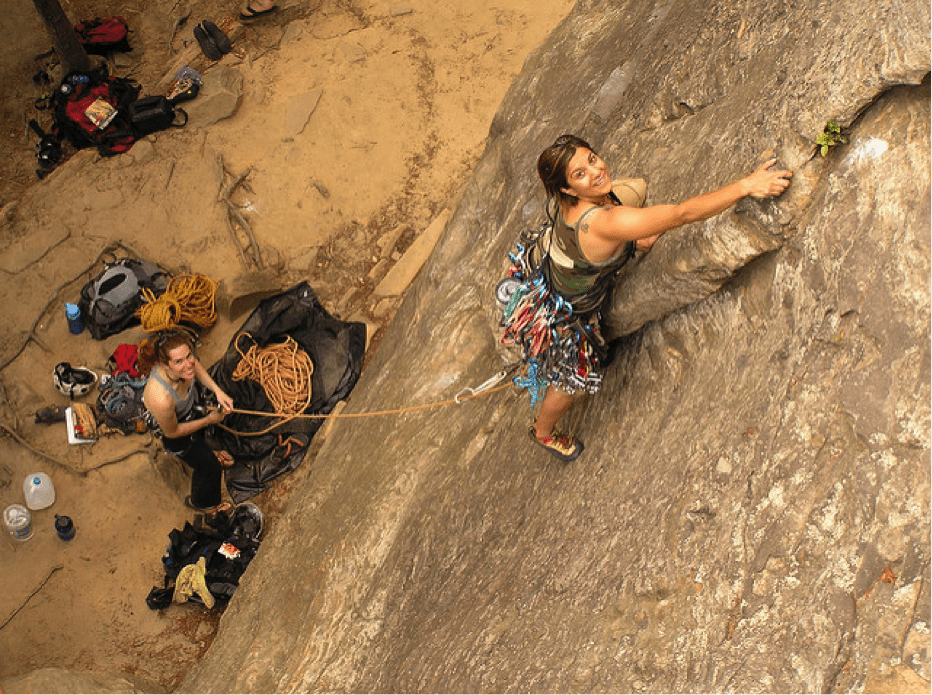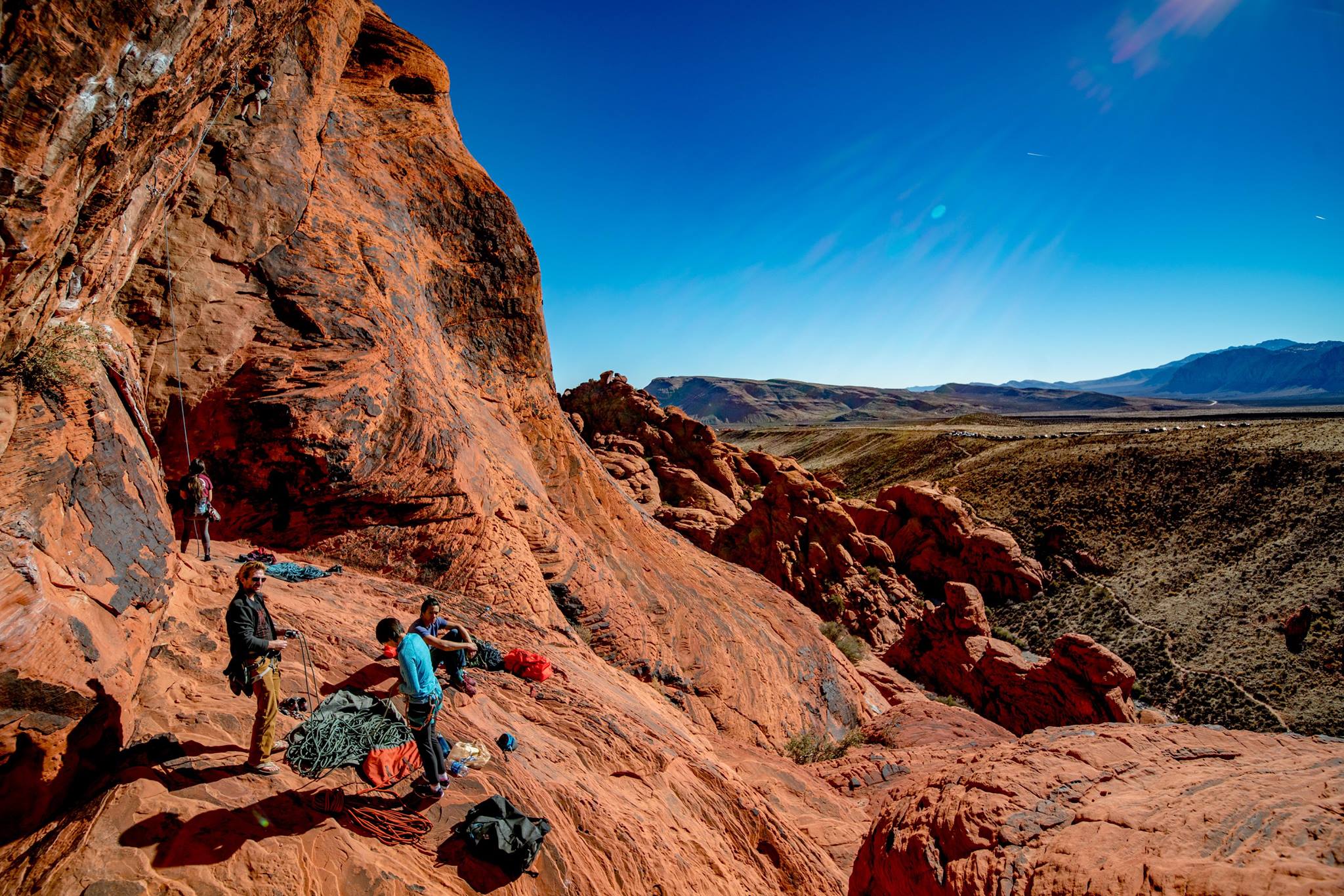Climbing outside is not as easy as grabbing your new rope and quickdraws, piling into your buddy’s Outback and parking it outside Miguel’s at the Red. If you do that without preparation, you’ll have earned dreaded “gumby” status. The culture around climbing began in places like Yosemite Valley, where intricate ethics and schools of thought emerged dictating best practices that have survived and been refined until today. Luckily, it’s never been easier to get outside and have great fun, while remaining safe and considerate of the environment, others, local ethics, and yourself – you just need to do the research first. That’s where we come in.

This is the first piece in a five part series called How To Navigate The Crag. We’ll cover everything from Leave No Trace ethics, to local style, to logistics. Today we’re starting with Leave No Trace.
What’s Leave No Trace? It’s a seven principle manifesto, codified in 1994 through the Leave No Trace center for outdoor ethics, that equips adventurers with the skills to always use the outdoors ethically and responsibly. Adopting the Leave No Trace Seven Principles makes it possible for others after you to enjoy the spaces we travel to in order to pursue our sport. The principles are simple, but not always easy – so we’ve outlined them below with climbing specific examples:
1. Plan Ahead and Prepare
The first principle outlines the need to be aware of the logistics and time you’ll be visiting a place and whether or not it makes sense for your personal intentions. You should only plan to visit crags when you’re fairly certain that you won’t be adding to a crush ofpeople during popular times: for example, trying to spend a bit of time work the most popular 5.10s at Roadside Crag in the Red River Gorge during Rocktoberfest weekend. It’s just not going to work without overcrowding and the environmental impacts that come with that, especially at a spot like Roadside Crag.
You should only plan to visit crags when you’re fairly certain that you won’t be adding to a crush ofpeople during popular times: for example, trying to spend a bit of time work the most popular 5.10s at Roadside Crag in the Red River Gorge during Rocktoberfest weekend. It’s just not going to work without overcrowding and the environmental impacts that come with that, especially at a spot like Roadside Crag.
2. Travel and Camp on Durable Surfaces
Next is to make sure you’re traveling and camping on durable surfaces.  The Buttermilks in Bishop, CA, are a great example of this: much of this area is ecologically sensitive, with off-trail traveling discouraged by the many signs along the trails from boulder to boulder. When we “go our own way” and create our own trails and campsites, we harm and cheapen the place for the next climbers – and just as critically, threaten climbing access. As LNT says, it’s always better to find a trail or campsite than to make one.
The Buttermilks in Bishop, CA, are a great example of this: much of this area is ecologically sensitive, with off-trail traveling discouraged by the many signs along the trails from boulder to boulder. When we “go our own way” and create our own trails and campsites, we harm and cheapen the place for the next climbers – and just as critically, threaten climbing access. As LNT says, it’s always better to find a trail or campsite than to make one.
3. Dispose of Waste Properly
The next principle is straightforward: pack it in, pack it out. This goes for heavily trafficked areas, like Muir Valley in the RRG, as well. This isn’t just your granola bar wrappers: If you use toilet paper in the woods, you need to bring it back out with you. Gross, we know, but even grosser to find it when it’s not yours. And this principle goes even further: your business should be done in a dug out hole at least 200 feet from water, camp, and trails. At the Red? What this really means is to do your heavy-duty business before you even get to the crag. Otherwise, be prepared to do it the right way for everyone, including the environment.
4. Leave What You Find
Hueco Tanks State Park is one of the best places in the country to boulder.  It can be difficult to get access: the permit system requires planning far in advance, and day-of spots to get in are competitive. One of the reasons is that the site is full of prehistoric rock paintings and pictographs. They’re as beautiful as they are fragile, and this is what the fourth principle is all about: leave behind what you find. That means don’t touch or modify or remove or damage the environment you’re in, within and beyond the bounds of local regulations (like the ability to bolt in areas like the Red; but if you’re that far along, you don’t need this article).
It can be difficult to get access: the permit system requires planning far in advance, and day-of spots to get in are competitive. One of the reasons is that the site is full of prehistoric rock paintings and pictographs. They’re as beautiful as they are fragile, and this is what the fourth principle is all about: leave behind what you find. That means don’t touch or modify or remove or damage the environment you’re in, within and beyond the bounds of local regulations (like the ability to bolt in areas like the Red; but if you’re that far along, you don’t need this article).
6. Minimize Campfire Impacts
Minimizing the impact of fires is all about what you learned from Smokey the Bear: be careful with your campfires, keep them as small as possible, and put them out completely, using water. We’ve seen rampant forest fires in the American West due to increasing drought and drying out of potential fire fuel resulting from a changing climate. It’s more critical than ever to keep personal fire usage under control in dry places. If you’re not overly careful, you could unintentionally cause a whole lot of damage.
7. Respect Wildlife
While visiting the Buttermilks at the right time of year, you could run almost right into a rattlesnake. You might not even see it until it starts rattling. And if it’s in the way of your next problem, you have a few options, only one of which is the right one. You could walk off the marked trail, around the snake, and onto your destination. But that wouldn’t hold to LNT ethics. You could also (if you’re both unethical and overly gutsy) try to goad the snake off the trail and out of your way. But that wouldn’t be right in light of the sixth principle: to not pester wildlife and keep your distance. Ultimately, the right move is to back away and climb something else. The snake won’t always be in your way, but the boulder will always be there.
You could walk off the marked trail, around the snake, and onto your destination. But that wouldn’t hold to LNT ethics. You could also (if you’re both unethical and overly gutsy) try to goad the snake off the trail and out of your way. But that wouldn’t be right in light of the sixth principle: to not pester wildlife and keep your distance. Ultimately, the right move is to back away and climb something else. The snake won’t always be in your way, but the boulder will always be there.
8. Be Considerate of Other Visitors
The last principle of Leave No Trace is fundamentally about community, and that’s the core of outdoor climbing culture – that we’re in it together, pursuing this daring sport in the world’s wild and beautiful places. To “be considerate of other visitors” means to yield to others on the trail (especially while carrying a crash pad), to tone down the crag music, and generally avoid obnoxious behavior. If it’d bother you if someone else did it, then don’t do it yourself. Make it fun for everyone. Simple.

The seven principles of Leave No Trace ethics aren’t easy to follow – that’s the point. They offer a better alternative to behaving outdoors in a way that threatens access to beautiful public lands all over the world. This article is just the start: learn more at the Leave No Trace website linked below.
Climbers are some of the most avid users of the outdoors, and it’s up to us to maintain the beauty of – and our own access to – these spaces.
Next up: How To Navigate The Crag, Part 2: Crag Etiquette
This article cites heavily from the Leave No Trace Center for Outdoor Ethics:
© 1999 by the Leave No Trace Center for Outdoor Ethics: www.LNT.org.
Red River Gorge and Red Rocks photos courtesy of Ed Yu
Roadside Crag photo courtesy of Laurel F
Rattlesnake photo courtesy of David~O
By Chris Rooney, a Chicago-based climber and writer.
